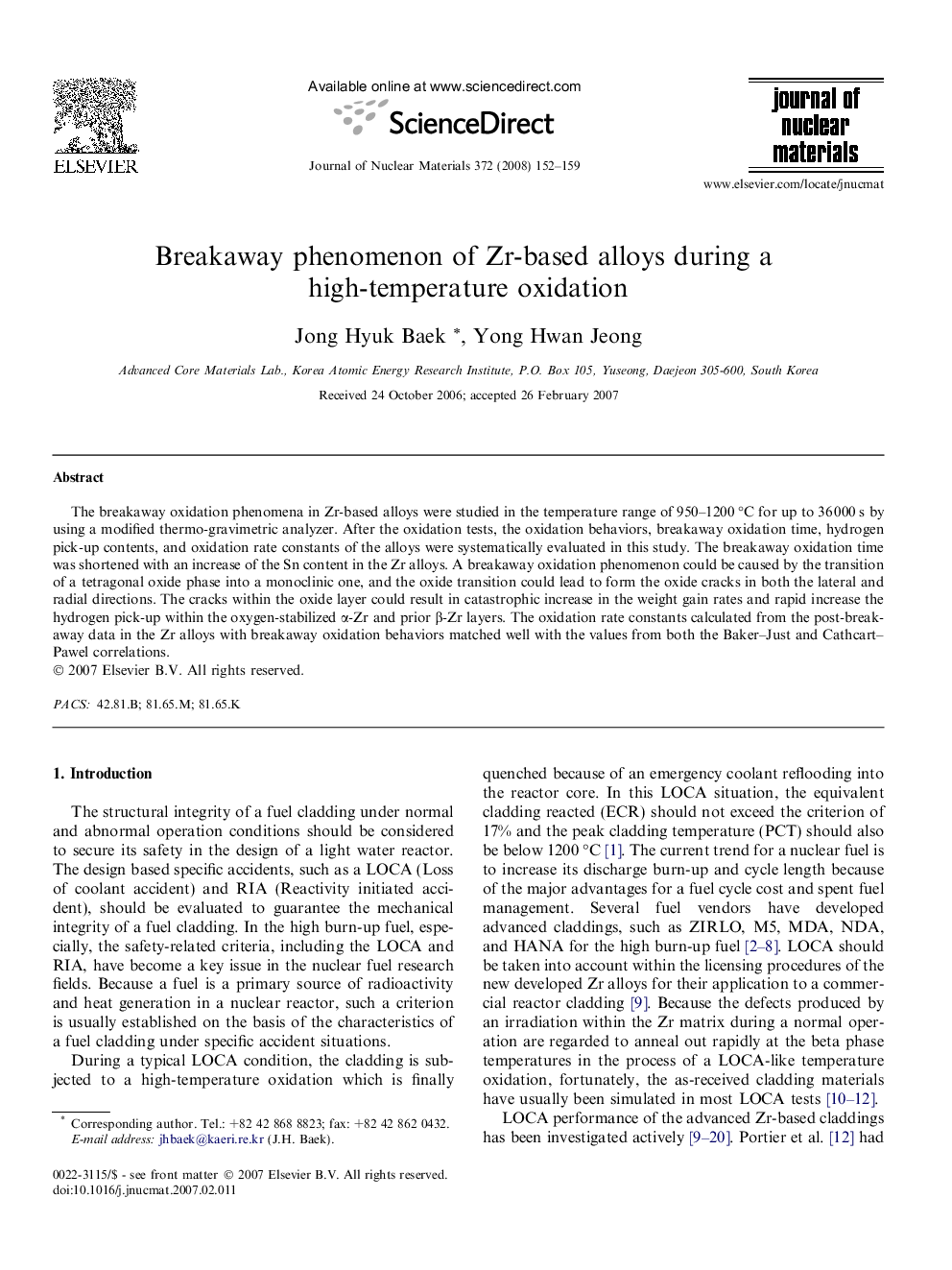| Article ID | Journal | Published Year | Pages | File Type |
|---|---|---|---|---|
| 1568998 | Journal of Nuclear Materials | 2008 | 8 Pages |
The breakaway oxidation phenomena in Zr-based alloys were studied in the temperature range of 950–1200 °C for up to 36 000 s by using a modified thermo-gravimetric analyzer. After the oxidation tests, the oxidation behaviors, breakaway oxidation time, hydrogen pick-up contents, and oxidation rate constants of the alloys were systematically evaluated in this study. The breakaway oxidation time was shortened with an increase of the Sn content in the Zr alloys. A breakaway oxidation phenomenon could be caused by the transition of a tetragonal oxide phase into a monoclinic one, and the oxide transition could lead to form the oxide cracks in both the lateral and radial directions. The cracks within the oxide layer could result in catastrophic increase in the weight gain rates and rapid increase the hydrogen pick-up within the oxygen-stabilized α-Zr and prior β-Zr layers. The oxidation rate constants calculated from the post-breakaway data in the Zr alloys with breakaway oxidation behaviors matched well with the values from both the Baker–Just and Cathcart–Pawel correlations.
